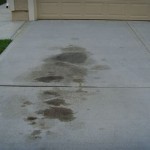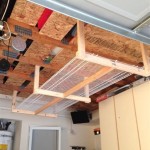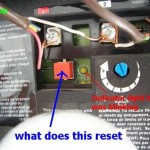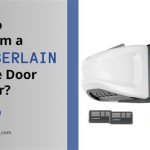Best Way to Paint Concrete Garage Floor Coating in Ethiopia 2024
Painting a concrete garage floor is a practical and cost-effective way to enhance its appearance, durability, and functionality. In Ethiopia, where climate and usage patterns can present unique challenges, selecting the right coating and application method is crucial for long-lasting results. This article outlines the recommended procedures for painting a concrete garage floor in Ethiopia in 2024, addressing factors such as surface preparation, coating selection, application techniques, and environmental considerations.
The benefits of painting a concrete garage floor extend beyond aesthetics. A properly applied coating protects the concrete from stains, oil spills, and chemical damage, which are common occurrences in a garage environment. It also reduces dust generation, making the space easier to clean and maintain. Furthermore, a sealed and coated floor is less susceptible to moisture penetration, preventing the growth of mold and mildew, which can be particularly important in areas with high humidity.
The Ethiopian climate varies significantly across regions, from the hot and arid lowlands to the cooler and wetter highlands. This variation must be considered when selecting the appropriate coating. Factors such as temperature fluctuations, humidity levels, and exposure to direct sunlight can affect the performance and longevity of the paint. Therefore, a thorough understanding of local conditions is essential for successful garage floor coating projects.
Key Point 1: Surface Preparation is Paramount
Regardless of the quality of the paint or coating, its adherence and durability depend heavily on proper surface preparation. This process involves cleaning, repairing, and profiling the concrete surface to ensure optimal bonding. Neglecting this step will inevitably lead to premature peeling, flaking, and coating failure.
The first step in surface preparation is a thorough cleaning. This involves removing all dirt, grease, oil, and other contaminants from the concrete. A pressure washer equipped with a detergent injector is an effective tool for this purpose. Use a degreasing solution specifically designed for concrete surfaces to emulsify oil and grease stains. Scrub the floor with a stiff-bristled brush to loosen stubborn dirt and debris. Rinse the floor thoroughly with clean water, ensuring that all detergent residue is removed.
After cleaning, inspect the floor for cracks, holes, and other imperfections. Small cracks can be filled with a concrete crack filler, while larger holes and damaged areas may require patching with a concrete repair compound. Follow the manufacturer's instructions for mixing and applying these repair materials. Allow the repair materials to cure completely before proceeding to the next step.
The final step in surface preparation is profiling the concrete. This involves creating a slightly rough surface that allows the coating to adhere properly. Acid etching is a common method for profiling concrete floors. However, it requires careful handling and disposal of hazardous chemicals. An alternative and often preferred method is mechanical grinding using a concrete grinder equipped with diamond grinding pads. This method is safer and more environmentally friendly, and it provides a consistent and controllable surface profile.
Regardless of the profiling method used, ensure that the surface is thoroughly rinsed and dried before applying the coating. A moisture meter can be used to verify that the concrete is sufficiently dry. Excess moisture can interfere with the curing process and lead to coating failure.
Key Point 2: Selecting the Right Coating for Ethiopian Conditions
Choosing the appropriate coating is crucial for achieving a durable and long-lasting finish. Several types of coatings are available for concrete garage floors, each with its own advantages and disadvantages. The selection should be based on factors such as the anticipated level of traffic, exposure to chemicals, and local climatic conditions.
Epoxy coatings are a popular choice for garage floors due to their excellent adhesion, durability, and chemical resistance. Epoxy coatings consist of two components, a resin and a hardener, which are mixed together before application. They form a hard, protective layer that is resistant to abrasion, stains, and many chemicals. Epoxy coatings are available in various colors and finishes, allowing for customization of the floor's appearance. However, epoxy coatings can be susceptible to UV degradation, so they are not ideal for floors that are exposed to direct sunlight for extended periods.
Polyurethane coatings offer excellent UV resistance and flexibility, making them suitable for floors that are exposed to sunlight and temperature fluctuations. Polyurethane coatings are also abrasion-resistant and chemical-resistant, although they may not be as durable as epoxy coatings in high-traffic areas. Polyurethane coatings are often used as a topcoat over epoxy coatings to provide added UV protection and durability.
Acrylic latex paints are a more affordable option for coating concrete garage floors. However, they are less durable and chemical-resistant than epoxy and polyurethane coatings. Acrylic latex paints are suitable for floors that receive light traffic and are not exposed to harsh chemicals. These paints are easy to apply and clean up, but they may require more frequent reapplication.
For the Ethiopian climate, a two-part epoxy coating followed by a polyurethane topcoat may be the most suitable option. The epoxy coating provides excellent adhesion and chemical resistance, while the polyurethane topcoat offers UV protection and added durability. Consider coatings specifically formulated for concrete floors and those that are resistant to the types of chemicals commonly found in garages, such as oil, gasoline, and brake fluid.
When selecting a coating, pay attention to the manufacturer's instructions and recommendations for application. Ensure that the coating is compatible with the concrete surface and that the necessary safety precautions are followed during application.
Key Point 3: Application Techniques for Optimal Results
Even with proper surface preparation and coating selection, the application technique plays a significant role in the final outcome. Following the manufacturer's instructions carefully and using the right tools and equipment are essential for achieving a smooth, consistent, and durable finish.
Before applying the coating, ensure that the garage is well-ventilated. Open windows and doors to allow for proper air circulation. Wear appropriate personal protective equipment, including gloves, eye protection, and a respirator, to protect yourself from the fumes and chemicals in the coating.
Mix the coating components according to the manufacturer's instructions. Use a power mixer to ensure that the components are thoroughly combined. Avoid overmixing, as this can introduce air bubbles into the coating. If using an epoxy or polyurethane coating, work quickly, as these coatings have a limited pot life once mixed.
Apply the coating in thin, even coats using a roller or brush. Avoid applying too much coating at once, as this can lead to runs, drips, and uneven drying. Work in small sections, overlapping each section slightly to ensure complete coverage. Allow each coat to dry completely before applying the next coat. Follow the manufacturer's recommendations for drying time between coats.
For best results, apply two or three coats of the coating. This will provide a thicker, more durable layer of protection. Additives, such as anti-skid agents, can be added to the final coat to improve traction and prevent slips. Allow the final coat to cure completely before using the garage floor. The curing time will vary depending on the type of coating and the ambient temperature and humidity.
Proper cleanup is essential after completing the coating project. Dispose of any leftover coating and cleaning materials according to local regulations. Clean the application tools with the appropriate solvents. A clean and well-maintained garage floor will provide years of service and enhance the overall value of the property.
In addition to the above points, consider the environmental impact of the coating project. Opt for coatings that are low in volatile organic compounds (VOCs) to minimize air pollution. Dispose of waste materials responsibly and recycle whenever possible. Properly applied and maintained concrete garage floor coating can be a sustainable and environmentally friendly way to improve the appearance and functionality of the garage.
The selection of the right application tools is also very important. Use high-quality brushes and rollers that are designed for use with epoxy or polyurethane coatings. Cheap or inferior tools can leave behind streaks or uneven surfaces. A notched squeegee can be used to spread the coating evenly over the floor. A spiked roller can be used to remove air bubbles from the coating.
Before starting the project, it is a good idea to practice applying the coating on a small, inconspicuous area of the floor. This will allow you to get a feel for the coating and the application process. It will also help you to identify any potential problems before you coat the entire floor.
During the application process, pay attention to the edges and corners of the floor. Use a brush to apply the coating to these areas, ensuring that they are fully covered. Use painter's tape to mask off any areas that you do not want to be coated. Remove the tape carefully after the coating has dried but before it has fully cured.
After the coating has cured, inspect the floor for any imperfections. Touch up any areas that need it. Apply a second coat if necessary. A well-coated concrete garage floor will provide years of protection and beauty. With careful planning and execution, it is a project that can be successfully completed by most homeowners in Ethiopia.

Floor Coating Trending As Business Ethiopian Review

Amazing Concrete Floor Paint Ideas In 2024

Best Paint For Basement Floor 2024 Review

Types Of Floor Paints 7 Best July 2024

A Comprehensive Guide On Flooring 2024 Painting Contractor

Amazing Concrete Floor Paint Ideas In 2024

What Is 1 Part Floor Paint A Comprehensive Guide Medibo Group

High Build Floor Coating

Best Paint For Basement Floor 2024 Review

Paint Vs Polyurethane Comparison 2024 Medibo Group
Related Posts








